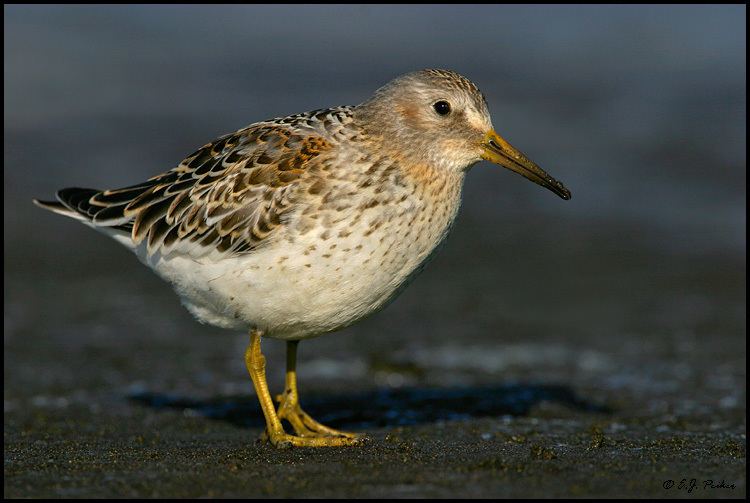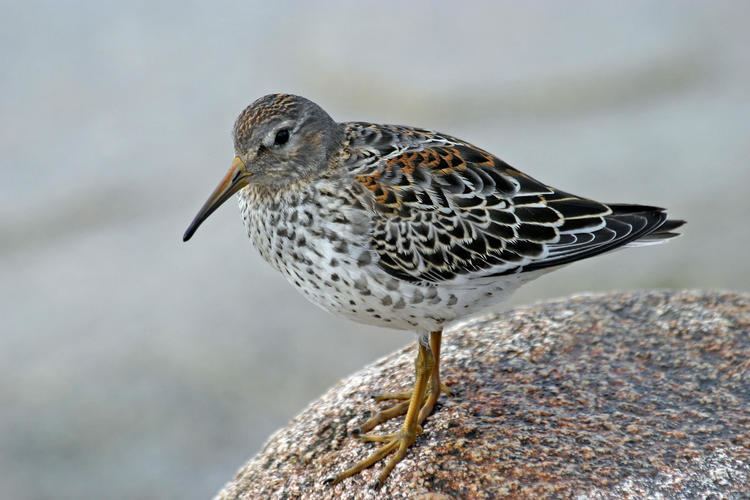Higher classification Calidrid | Phylum Chordata Family Scolopacidae Rank Species | |
 | ||
Similar Bird, Sandpiper, Calidrid, Black turnstone, Surfbird | ||
Rock sandpiper
The rock sandpiper (Calidris or Erolia ptilocnemis) is a small shorebird.
Contents
Rock sandpiper
Description

Adults have short yellow legs and a medium thin dark bill. The body is dark on top with a slight purplish gloss and mainly white underneath. The breast is smeared with grey and the rump is black. The Pribilof Islands subspecies of this bird shows a bold black belly patch.
Breeding

Their breeding habitat is the northern tundra on Arctic Pacific coast of Alaska and the Aleutian and Pribilof Islands. The birds also breed in Kamchatka and the Kuril Islands. The breeding pair is usually monogamous, with pair bonds usually lasting several years. They nest on the ground either elevated on rocks or in lower damp location. The males makes several scrapes; the female choose one and lays 4 eggs. Both the male and female take the responsibility for incubation.
Subspecies
There are four subspecies of rock sandpipers:

Migration

Birds migrate south to rocky ice-free Pacific coasts in winter. The subspecies leap frog each other for winter, with more northerly breeders passing south of more southerly breeders. It can form rather large wintering flocks.
Diet

These birds forage on rocky coasts. They mainly eat insects, mollusks, marine worms, also some plant material. It often feeds up to its breast in water, and often swims. It roosts on rocks near its feeding grounds just above the high tide spray.

